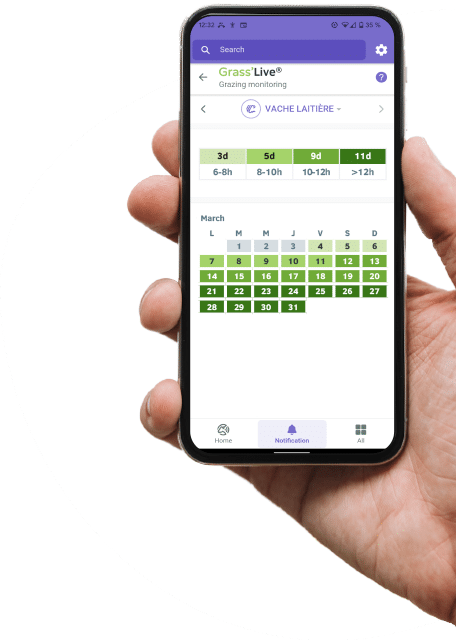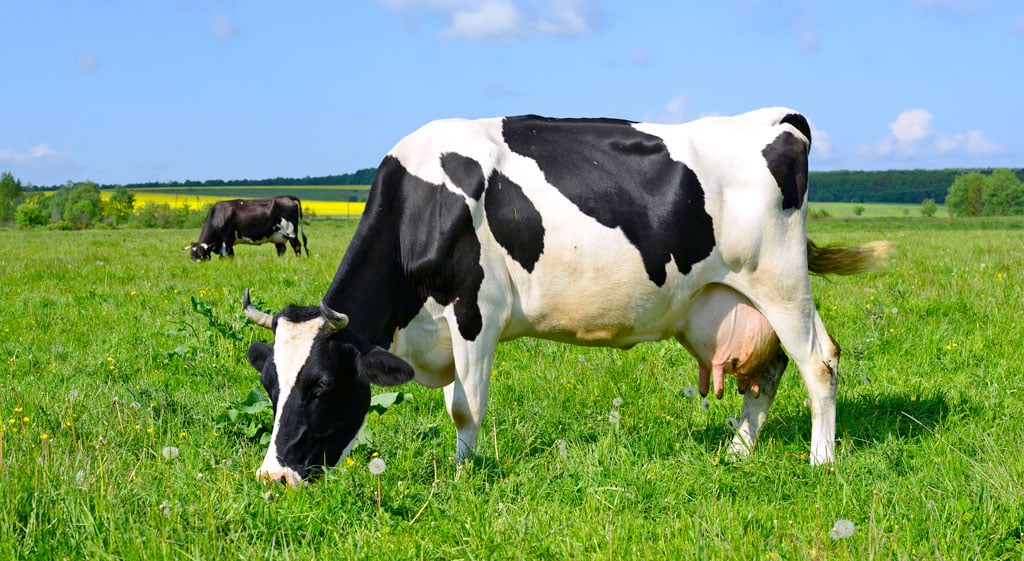Dairy farmers are well aware that cows can exhibit various behaviors when it comes to their eating habits, rumination, and activity levels. These variables affect the quality and quantity of milk and can also inform about the health status of cattle. Therefore, it is crucial to monitor and record cattle behavior meticulously. This allows farmers to predict the impact of events that influence both the quality of milk and beef produced by the cattle.
In the case of freely grazing cows that might be either on pasture or in the barn, it is important to know when grass-feeding actually takes places as opposed to indoor grain feeding. This is because grass and grain feed have different nutritional properties and their proportion in a cow’s diet will affect its health and its production. In modern smart agriculture, data offers the key to enhancing productivity. Tracking these patterns allows to effectively deal with any abnormal changes and any issues or problems can be quickly remedied. By gathering movement, ingestion and rumination data, farmers have the information they need to care for their animals more effectively and adapt nutrition and management.
Real time Monitoring livestock activity makes the difference
In recent years, wireless sensor networks and Internet of Things (IoT) technologies have paved the way for implementing monitoring systems on farms. Accelerometer sensors placed in the cow collar can provide data in real time on the position of cows and their behavior. These systems can analyse ingestion data and cow behavior to estimate the amount of time spent by cows on pasture.
Real time monitoring of cattle grazing behavior reduces the stress of farmers’ daily operations because it allows to have an instant picture of the herd so to
- Optimise livestock productivity: achieving and maintaining cow productivity when using grazing as the primary forage source requires constant management. To know the amount of time spent grazing on pastures at each moment can help farmers to adjust the quantity and quality of indoor feed. This is because when cows are grass-feeding on pastures it is difficult to know exactly how much and how well they are eating. A decreased amount of time spent grazing or longer rumination times can indicate a lack of or low-quality grass available for cows and it might be necessary to supplement indoor rations or transfer cattle to another paddock to preserve milk yield
- Achieve a better milk and beef quality : a careful planification of grazing helps achieve a better quality without hampering productivity. In addition to ensuring productivity, grazing data are useful because they can be used to improve milk and beef quality. Milk and beef from grass-fed cattle are richer in beneficial nutrients such as Omega-3 polyunsaturated fatty acids. The healthier nutritional profile of grass-fed milk and beef resonate with consumers that desire natural and sustainable dairy products, and provides additional value to farm production.
- Optimize pasture management: Identifying the optimal time to move the herd from one paddock to another is key. Grazing & pasture management aims at achieving the benefits of fresh grass without harming the long term growth & nutritional quality of the pasture. Knowing how much grazing takes place helps implement good practices such as dynamic rotational grazing and other techniques aimed a maximising grass-feeding benefits.
- Promote animal welfare : grazing is a livestock practice that is in very high demand by society and consumers concerned about animal welfare. Scientific research shows that pasture access can promote natural behavior, improve health, and given the choice cows tend to spend most of their time outside. However, livestock breeders need to be watchful because grazing cow welfare depends on a number of conditions: water needs to be plentiful and accessible, unhealthy animals need to be taken care of, outdoor diseases (insect-borne, bacterial) need to be prevented and the availability of good quality forage needs to be verified. For all these reasons, monitoring tools for cattle can help farmers to take measures to maximise the health benefits of grass-feeding while keeping an eye on risks.
- Maintain nutritional balance and improve reproduction : To be aware of the amount of grass vs grain ingested at any time by grazing livestock allows farmers to adjust rations in order to optimize and maintain an adequate nutritional balance and ensure that enough food is available to cows. Nutritional balance results in a healthier herd decreasing health expenses and improving reproduction

Grass’live®: create your grazing calendar with an automatic monitoring tool for grazing livestock activity
Thanks to the FarmLife monitoring all-in-one solution, real-time monitoring of grazing behavior has become a reality with the introduction of Grass’live®. This innovative service offers a 7-day grazing calendar, enabling farmers to ensure traceability, adjust herd management strategies, and achieve the production of premium quality meat and milk.
Grazing days are obtained automatically through the analysis of data from the accelerometer on the cow collar. The service estimates the time spent on pasture by the group based on the feed intake at the trough and the feed intake at pasture of the animals in the group. This requires data from a group of at least 5 cows, as it returns collective statistics which are displayed on a calendar, which can be edited and downloaded. The information on the calendar includes
- the days spent on pasture
- the time spent on pasture for each of these days.
- the cumulated number of pasture days during the year.
Organic and grass-fed certification made easy
Grazing is a livestock practice that is in very high demand by society and consumers concerned about animal welfare. In today’s market the advantage of grass fed dairy and beef becomes more and more evident, and farming systems which have evolved to maximise production from grass with little reliance on other feed types are rewarded.
In Europe (UK, Ireland, Germany etc) and the US, different grass-fed standards have recently has been developed, in response to the demands of the marketplace. Increasingly purchasers are expressing a desire for dairy products displaying a grass-fed certification. It is no longer acceptable to just declare that a product is Grass Fed, the market requires evidence to support the claim.
With Grass’live® within Farmlife this evidence is easily provided, thanks to the automatically generated grazing calendar.
Track the behavior of cows wherever you are, with your smartphone or tablet
The Grass’live® service within Farmlife integrates the already existing services to monitor ingestion, reproduction, heat and cow activity. It is easy to install within 15 minutes and does not demand any maintenance. With Grass’live® farmers can access information on the grass-feeding activity of their herd at any time, through their smartphone, tablet, or computer:
- Access to data on cow presence on pasture for the previous days.
- For each group of animals, identify the days and time spent on pasture
- Check and compare grass intake patterns and trends over the last 7 days.
- Quickly access the total number of grazing days in the year.Traceability. All rumination data are stored. Keep a history of the past two years
- To compare changes from year to year.
- Access, upload and edit an automatically generated grazing calendar
- To reduce administrative workload. Easily transfer data





